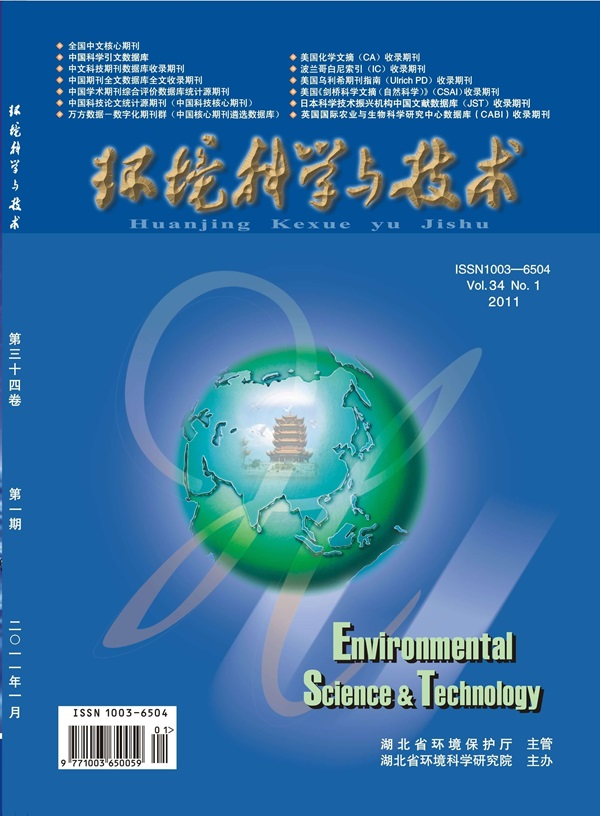Formation of Eight Classes of DBPs from Chlorine, Chloramine, and Ozone: Mechanisms and Formation Pathways.
IF 11.3
1区 环境科学与生态学
Q1 ENGINEERING, ENVIRONMENTAL
引用次数: 0
Abstract
Disinfection byproducts (DBPs) are formed during drinking water treatment from the reaction of chemical disinfectants with natural organic matter (NOM), anthropogenic contaminants, and inorganic bromide and iodide. DBPs are of public concern due to their carcinogenic and genotoxic effects and adverse effects observed in many epidemiologic studies. Formation mechanisms have been studied in order to identify precursors, reaction intermediates, and reaction kinetics and to predict new classes of DBPs. By understanding formation mechanisms, steps can be taken to remove DBP precursors and adjust treatment conditions to minimize DBP formation. This paper presents a critical review of formation mechanisms for eight classes of DBPs, including trihalomethanes (THMs), haloacetic acids (HAAs), haloketones (HKs), haloacetaldehydes (HALs), haloacetonitriles (HANs), haloacetamides (HAMs), halonitromethanes (HNMs), and nitrosamines (NAs) from the popular disinfectants chlorine, chloramine, and ozone. Important precursors in the formation of many of these DBPs include phenolic, β-dicarbonyl, and oxopentadioic acid groups found in humic NOM species. Likewise, amino acids are also precursors for several classes of DBPs. HANs can form by chloramination of aldehydes, and HAMs can form from the hydrolysis of HANs. HNMs can form by the oxidation/halogenation of amines as well as by nitration and halogenation of humic substances in the presence of nitrite. Preozonation followed by chlorine or chloramine can significantly increase HNM formation. Finally, dichloramine and aqueous oxygen are important reactants in the formation of nitrosamines from chloramine. Nitrosamines can also be formed by N,N-dimethylsulfamide. Detailed formation mechanisms for 8 classes of drinking water DBPs formed by chlorine, chloramine, and ozone are presented.氯、氯胺和臭氧形成八类dbp:机制和形成途径。
消毒副产物(DBPs)是在饮用水处理过程中,化学消毒剂与天然有机物(NOM)、人为污染物、无机溴化物和碘化物反应而形成的。由于在许多流行病学研究中观察到dbp的致癌和遗传毒性作用以及不良反应,因此引起了公众的关注。为了鉴定前体、反应中间体和反应动力学以及预测新的dbp种类,研究了形成机制。通过了解DBP的形成机制,可以采取措施去除DBP前体并调整处理条件以减少DBP的形成。本文综述了从常用消毒剂氯、氯胺和臭氧中提取的三卤甲烷(THMs)、卤乙酸(HAAs)、卤酮(hk)、卤乙醛(hal)、卤乙腈(HANs)、卤乙酰胺(HAMs)、卤硝基甲烷(HNMs)和亚硝胺(NAs)等八类dbp的形成机理。许多dbp形成的重要前体包括在腐殖质NOM物种中发现的酚、β-二羰基和氧戊二酸基团。同样,氨基酸也是几种dbp的前体。汉斯可以通过醛的氯胺化形成,汉斯可以通过水解形成汉斯。hnm可以通过胺的氧化/卤化以及在亚硝酸盐存在下腐殖质的硝化和卤化形成。预臭氧化后加氯或氯胺可显著增加HNM的形成。最后,二氯胺和水氧是氯胺生成亚硝胺的重要反应物。亚硝胺也可以由N,N-二甲基磺胺形成。介绍了氯、氯胺和臭氧对饮用水中8类dbp的形成机理。
本文章由计算机程序翻译,如有差异,请以英文原文为准。
求助全文
约1分钟内获得全文
求助全文
来源期刊

环境科学与技术
环境科学-工程:环境
CiteScore
17.50
自引率
9.60%
发文量
12359
审稿时长
2.8 months
期刊介绍:
Environmental Science & Technology (ES&T) is a co-sponsored academic and technical magazine by the Hubei Provincial Environmental Protection Bureau and the Hubei Provincial Academy of Environmental Sciences.
Environmental Science & Technology (ES&T) holds the status of Chinese core journals, scientific papers source journals of China, Chinese Science Citation Database source journals, and Chinese Academic Journal Comprehensive Evaluation Database source journals. This publication focuses on the academic field of environmental protection, featuring articles related to environmental protection and technical advancements.
 求助内容:
求助内容: 应助结果提醒方式:
应助结果提醒方式:


